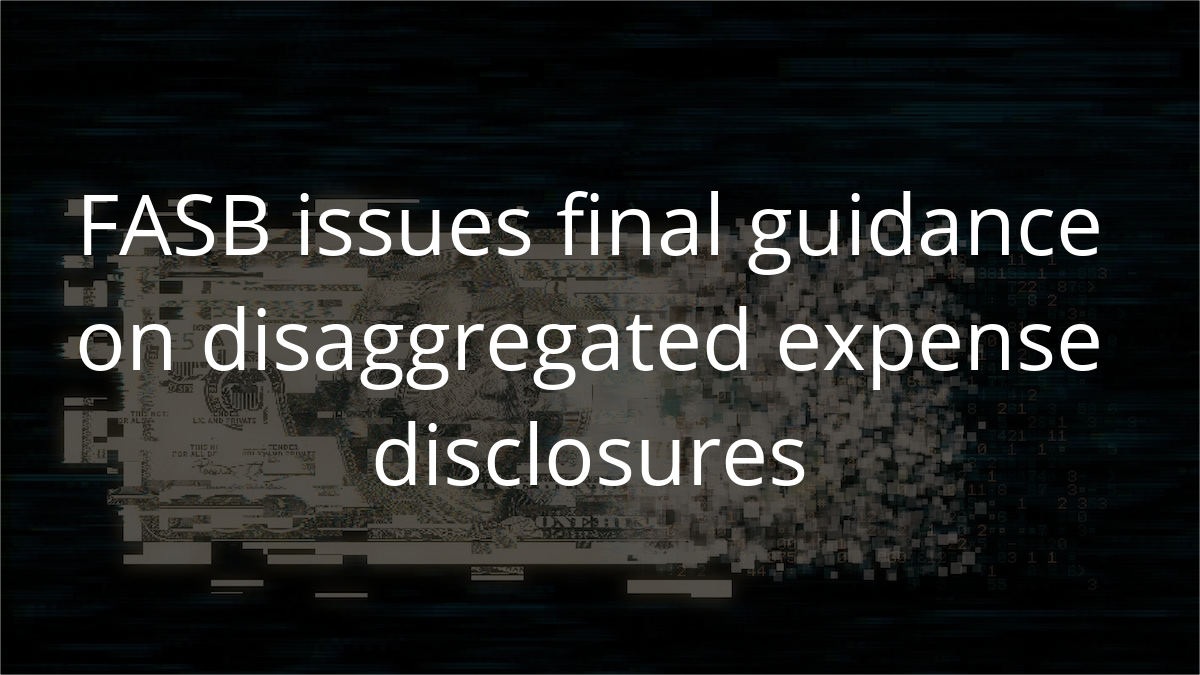ARTICLE | October 25, 2024
Executive summary: 2025 Inflation-adjusted items
The IRS revenue procedures provides the amount for inflation-adjusted items for 2025. Amounts adjusted for inflation include the individual tax brackets, the section 199A qualified business income thresholds, the amount of average annual gross receipts to qualify as a small taxpayer, the limitations for section 179 expensing, estate and gift exemptions, as well as several other provisions.
2025 Inflation-adjusted items
On Oct. 22, 2024, the IRS released its annual revenue procedure containing the inflation-adjusted items for 2025. There are multiple provisions in the Internal Revenue Code that require the IRS to adjust the applicable dollar amounts for inflation – many of these relate to individual income taxes, while others relate to business income. Selected inflation-adjusted items are listed below. For items impact exempt organization, please review our prior article here. For the full listing of inflation items, please review the linked revenue procedure.
Individual tax rate tables –The highest tax rate remains at 37%. This rate is applicable for taxable income over:
- $751,600 for married filing jointly
- $375,800 for married filing separately
- $626,350 for single filing taxpayers
- $626,350 for head of household
The top capital gains rate of 15% is applicable for taxable income over:
- $600,050 for married filing jointly
- $300,000 for married filing separately
- $533,400 for single filing taxpayers
- $566,700 for head of household
Estate and trust tax rate table – The estate and trust income tax rate is 37% for taxable income over $15,650. The 15% capital gains rate is applicable for estates and trusts with taxable income over $15,900.
Cafeteria plans – The annual limitation under section 125 for contributions to a health flexible spending account increased from $3,200 to $3,300.
Qualified transportation fringe benefit – The section 132(f) monthly limitation for qualified transportation (in a commuter vehicle or mass transit passes) and qualified parking increased from $315 per month to $325 per month.
Election to expense certain depreciable assets under section 179 – Rev. Proc. 2024-40 raises the section 179 expensing limit under section 179(b)(1) to $1,250,000. The cost limit for sport utility vehicles expensed under section 179 will be $31,300. Under section 179(b)(2), the $1,250,000 limitation gets reduced by the amount that section 179 property placed in service during the 2025 taxable year exceeds $3,130,000.
Energy efficient commercial buildings deduction – the dollar value of the maximum allowance for the deduction under section 179D(b)(2) is set at 58 cents, which gets increased by 2 cents for every percentage point of certified energy and power reduction over the 25% threshold. Rev. Proc. 2024-40 raises the cap on the deduction to $1.16. The increased deduction for certain property under section 179D(b)(3) (i.e., building projects meeting certain prevailing wage and apprenticeship requirements) is set at $2.90 increased by 12 cents for every percentage point of certified energy and power reduction over the 25% threshold, with a $5.81 maximum.
Qualified business income – the threshold amount and phase-in range are adjusted as follows:
|
Filing Status |
Threshold amount |
Phase-in range amount |
|
Married filing jointly |
$394,600 |
$494,600 |
|
Married filing separately |
$197,300 |
$247,300 |
|
Other returns |
$197,300 |
$247,300 |
(An increase of $10,700 for both threshold and phase-in range for joint returns, and an increase of $5,350 for both threshold and phase-in range for separate returns.)
Limitation on use of cash method of accounting – the section 448(c) threshold for certain taxpayers to use the overall cash method of accounting, as well as other small business taxpayer simplified methods, is set at $31,000,000 in annual gross receipts averaged over the three taxable years ending prior to tax year 2025.
Threshold for excess business loss limitations – the excess business loss limitation threshold is increased to $313,000 ($626,000 if married filing jointly), an increase of $8,000 ($16,000 for joint returns).
Unified credit against estate and gift tax – the basic exemption amount is increased to $13.99 million for determining the amount of the unified credit for estate and gift tax.
Annual exclusion for gifts – the annual exclusion for gifts is increased to $19,000 per donee for present interest gifts.
Note that certain other annually adjusted limitations, such as qualified retirement plan limitations, will be the subject of separate guidance.
Let’s Talk
Fill out the form below and we’ll get back to you to discuss your specific situation.
This article was written by Ryan Corcoran, Anne Bushman, Carol Warley, Elizabeth Cordova and originally appeared on 2024-10-25. Reprinted with permission from RSM US LLP.
© 2024 RSM US LLP. All rights reserved. https://rsmus.com/insights/services/business-tax/irs-releases-2025-tax-inflation-adjustments.html
RSM US LLP is a limited liability partnership and the U.S. member firm of RSM International, a global network of independent assurance, tax and consulting firms. The member firms of RSM International collaborate to provide services to global clients, but are separate and distinct legal entities that cannot obligate each other. Each member firm is responsible only for its own acts and omissions, and not those of any other party. Visit rsmus.com/about for more information regarding RSM US LLP and RSM International.
The information contained herein is general in nature and based on authorities that are subject to change. RSM US LLP guarantees neither the accuracy nor completeness of any information and is not responsible for any errors or omissions, or for results obtained by others as a result of reliance upon such information. RSM US LLP assumes no obligation to inform the reader of any changes in tax laws or other factors that could affect information contained herein. This publication does not, and is not intended to, provide legal, tax or accounting advice, and readers should consult their tax advisors concerning the application of tax laws to their particular situations. This analysis is not tax advice and is not intended or written to be used, and cannot be used, for purposes of avoiding tax penalties that may be imposed on any taxpayer.




